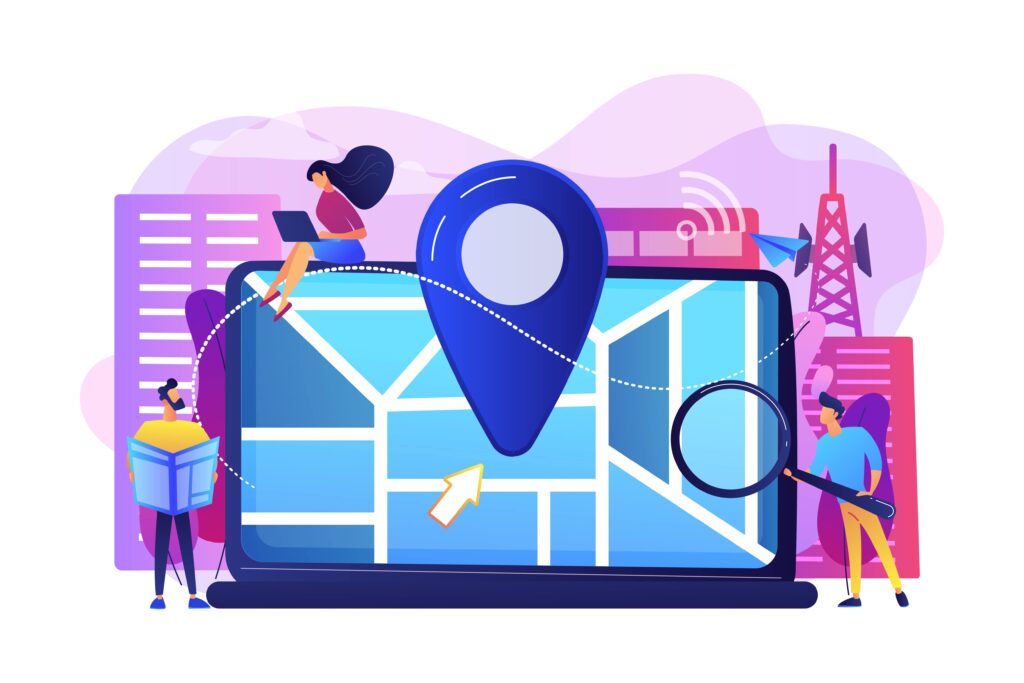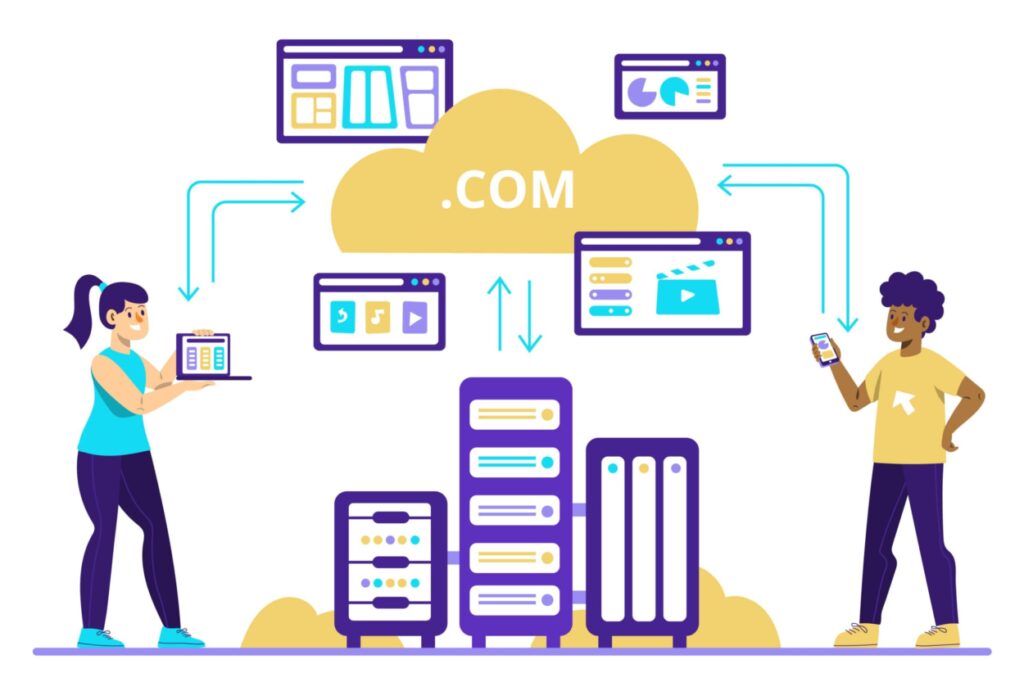New York City is one of the most competitive digital markets in the world. With millions of businesses vying for visibility, local SEO is no longer optional—it’s essential. Whether you run a coffee shop in Brooklyn, a law firm in Manhattan, or a boutique in Queens, ranking high in local search results can make the difference between thriving and struggling. If you own a small business in New York, you know how competitive the market is. You need to stand out from the crowd and attract more customers to your website and your store. That’s where local SEO in New York comes in.
Local SEO is the practice of optimising your website and online presence for local search queries. Local search queries are those that include a specific location, such as “barber Boston” or “pizza near me”. Local SEO helps you rank higher in the local pack, which is a set of three local business results with a map of their locations pulled from Google Maps.
This ultimate checklist will guide New York small businesses through every step of local SEO, from Google Business Profile optimization to hyperlocal content strategies.
- Why Local SEO Matters in New York
- The Ultimate Local SEO Checklist for Small Businesses in New York
- 1. Claim and optimize your Google My Business profile
- 2. Perform local keyword research
- 3. Optimize your website for local keywords
- 4. Build NAP citations
- 5. Get local backlinks
- 6. Reviews & Reputation Management
- 7. Content Marketing with a Local Twist
- 8. Social Media & Community Engagement
- 9. Track and measure your results
- 10. Advanced Strategies for NYC Businesses
- Local SEO New York: Final Thoughts
Why Local SEO Matters in New York
New York City is unlike any other market in the world. With over 8 million residents and thousands of small businesses competing in every borough, visibility is everything. Local SEO ensures that your business shows up when potential customers search for products or services “near me” — whether they’re in Manhattan, Brooklyn, Queens, the Bronx, or Staten Island.
Local SEO is important because:
- 46% of all searches in Google have “local intent”
- 29% of all Google SERPs contain a local pack in the results
- 76% of consumers who search for something local on their phone visit a store that day
The Competitive NYC Digital Landscape
- Every neighborhood has its own micro‑economy. A bakery in Williamsburg isn’t competing with one in Harlem, but both need to dominate searches in their local area.
- Google’s Local Pack (the top three map listings) is prime real estate. Without local SEO, your business risks being invisible to nearby customers.
- Tourists also rely heavily on local search to find restaurants, shops, and attractions, making SEO crucial for businesses that depend on foot traffic.
Why Small Businesses Can’t Ignore Local Search
- Mobile-first behavior: Most New Yorkers search on the go, using smartphones to find immediate solutions.
- High intent searches: Queries like “best coffee near Times Square” or “affordable CPA in Queens” often lead directly to purchases.
- Level playing field: Local SEO allows small businesses to compete with larger chains by targeting hyperlocal keywords and building trust through reviews.
- Community connection: Optimized local presence helps businesses become part of the neighborhood fabric, attracting loyal, repeat customers.
The Ultimate Local SEO Checklist for Small Businesses in New York
So, how can you improve your local SEO in New York? Here is the ultimate checklist for small businesses:
1. Claim and optimize your Google My Business profile
Google My Business (GMB) is a free tool that allows you to manage your business information on Google Search and Maps. It’s one of the most important factors for local SEO, as it helps Google understand your business and show it to relevant users.
To claim and optimize your GMB profile, you need to:
- Verify your business with Google
- Choose the right category and subcategory for your business
- Add your business name, address, phone number, website, and hours of operation
- Write a compelling business description that includes your keywords and location
- Upload high-quality photos and videos of your business
- Encourage customers to leave reviews and respond to them
- Post regular weekly updates and offers on your GMB profile
2. Perform local keyword research
Keyword research is the process of finding the words and phrases that potential customers use to search for your products or services online. Local keyword research is similar, but with a focus on location-specific terms.
- Use tools like Google Keyword Planner and SEMrush.
- Focus on neighborhood-specific keywords (e.g., “SoHo art gallery,” “Astoria dentist”).
- Include long-tail queries like “affordable tax filing Queens.”
For example, if you are a barber in New York, some of your local keywords might be:
- Barber New York
- Best barber in NYC
- Barber near me
- Men’s haircut NYC
To perform local keyword research, you can use tools like Google Keyword Planner, Moz Keyword Explorer, or Ahrefs Keywords Explorer. You can also look at the suggestions that Google provides when you type in a query, or the related searches that appear at the bottom of the SERP.
3. Optimize your website for local keywords
Once you have a list of local keywords, you need to optimize your website for them. This means:
- Creating separate pages for each location or service area that you serve
- Adding schema markup to your website to provide structured data to Google
- Adding a map and directions to your contact page
- Adding testimonials and reviews from local customers to your website
4. Build NAP citations
NAP stands for Name, Address, and Phone Number. NAP citations are mentions of your business information on other websites, such as directories, social media platforms, or review sites. NAP citations help Google verify your business and improve your local authority.
To build NAP citations, you need to:
- Ensure that your NAP information is consistent and accurate across all platforms
- Submit and update your listings on relevant directories, such as Yelp, Yellow Pages, NYC Chamber of Commerce, and Foursquare
- Find niche-specific or location-specific directories that are relevant to your business
- Monitor and manage your online reputation by responding to reviews and feedback
5. Get local backlinks
Backlinks are links from other websites that point to yours. They are one of the main ranking factors for SEO, as they signal trust and authority to Google. Local backlinks are backlinks from websites that are relevant to your location or industry.
To get local backlinks, you can:
- Create valuable content that attracts links from other websites
- Reach out to local bloggers, influencers, or journalists and offer them something of value in exchange for a link
- Sponsor or participate in local events or organizations and get featured on their websites
- Join local associations or chambers of commerce and get listed on their websites
6. Reviews & Reputation Management
In New York’s competitive market, online reviews can make or break a small business. Managing your reputation through authentic feedback and timely responses builds trust and drives local customer loyalty.
- Encourage satisfied customers to leave Google reviews.
- Respond promptly to both positive and negative reviews.
- Showcase testimonials on your website.
7. Content Marketing with a Local Twist
In New York, content marketing works best when it reflects the city’s unique culture and neighborhoods. By tailoring blogs, videos, and guides to local trends, small businesses can connect authentically with their community.
- Write blog posts about NYC trends (e.g., “Best brunch spots in Brooklyn”).
- Create guides like “How to choose a CPA in Manhattan.”
- Use video content showcasing your business in action.
8. Social Media & Community Engagement
In New York, social media isn’t just about visibility — it’s about building real community connections. Engaging with local audiences through platforms and neighborhood groups helps small businesses strengthen trust and drive foot traffic.
- Engage with community groups on Facebook.
- Run geo-targeted ads for NYC neighborhoods.
9. Track and measure your results
The last step of local SEO is to track and measure your results. This will help you understand what’s working and what’s not, and make data-driven decisions to improve your strategy.
To track and measure your local SEO results, you can use tools like:
- Google Analytics to monitor your website traffic, conversions, and behavior
- Google Search Console to monitor your website’s performance, errors, and keywords
- Google My Business Insights to monitor your GMB profile views, clicks, and calls
- Rank tracking tools to monitor your rankings for local keywords and the map pack
10. Advanced Strategies for NYC Businesses
In a city as competitive as New York, basic local SEO isn’t enough to stand out. Advanced strategies help small businesses gain an edge by leveraging hyperlocal targeting, AI tools, and innovative digital tactics.
- AI-driven SEO tools for predictive keyword targeting.
- Hyperlocal schema (borough-level).
Local SEO New York: Final Thoughts
In a city where competition is fierce and attention spans are short, local SEO is the bridge between your business and the customers who are actively looking for you. Without it, even the best products or services risk being overlooked in the digital noise of New York.
Local SEO in New York is a marathon, not a sprint. By following this checklist, small businesses can increase visibility, attract foot traffic, and build long-term trust in one of the toughest markets in the world. It is a powerful way to boost your online visibility and attract more customers to your small business in New York. By following this ultimate checklist, you can optimize your website and online presence for local search queries and rank higher in the local pack.
Read more:
10 Must Have WordPress Plugins for a Website





